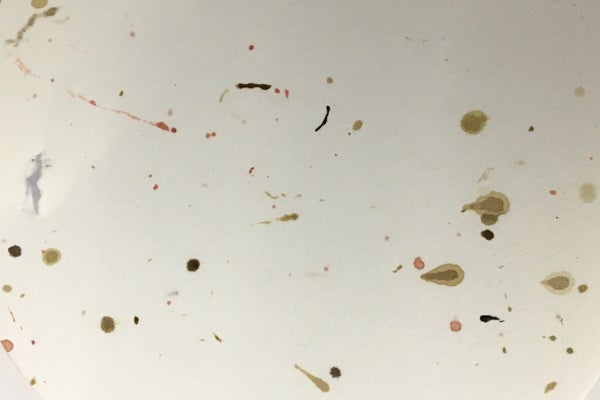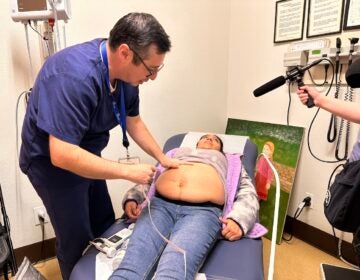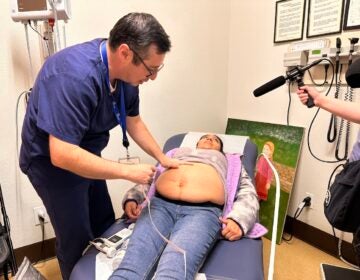Bugs on bodies: how flies can help and hurt a crime scene
Listen
A large cluster of adult flesh flies, Sarcophaga bullata, feeding on bovine liver. (Photo courtesy of David Rivers)
It’s difficult to gross out David Rivers, a professor of biology at Loyola University Maryland. He’s a forensic entomologist, meaning he spends his time looking at insects on and around dead bodies.
“People are repulsed by insects but they are fascinated by death and the macabre,” he says.
Insects and bugs are drawn to dead bodies, and Rivers looks at what’s crawling around at a crime scene for clues.
“If you really have a good understanding of the insects, and who should be here and when should they be here in terms of the location, then you can actually determine, has that body been moved? In some cases, you can actually use insects as surrogates for human tissue. If a body is really badly decomposed but you suspect that this person has been shot, then sometimes you can actually grind up the fly maggots and detect gunshot residue in their body,” he says.
Flies can sometimes help solve a crime, but they can also alter crime scenes, because of the way they eat.
“They’re very sloppy, they remind me of my teenage sons. If you have a body that there are body fluids that actually have been released, and that’s fairly common regardless of whether you’ve actually had some type of blunt force trauma, they’re going to walk through their food first.”
That means if a fly walks through blood at a scene, it can distort the shape of the splatter and throw off a blood stain expert.
“They also release their own secretions: so they will spit and they will also poop, which is liquid, and when they do, if they’ve been feeding upon the victim’s tissues, then what they’re going to do is they’re going to deposit their own spit and poop that looks like the stains that actually are derived from the victim, in which case, it can confuse a bloodstain analyst because it looks the same and it chemically is going to test the same.”

Artifacts deposited by the flesh fly, Sarcophaga bullata. These stains were produced after the fly fed on human blood. (Photo courtesy of David Rivers)
For example, if flies spit and poop all over a lamp shade that didn’t have any blood on it, that can change what investigators think happened at the scene. So Rivers is looking to find a way to quickly differentiate between fly spit and poop and actual blood from the victim.
“We’ve recognized that flies have enzymes that they use for digestion that are structurally different than what we have in humans. We’ve designed an antibody that would be able to recognize enzymes derived from flies that visit a corpse. We’ve got it now that if you’re looking at stains, you can put antibody on top and use a secondary compound that when that’s added, will cause a color change anywhere you have fly enzyme.”
He’ll put these antibodies into a spray that can be used at crime scenes. Right now he’s testing the spray to make sure it’s effective with as many different types of flies as possible. The next step is to streamline the process so that it’s quick and easy for anyone to use it.
And as far as the smell of dead bodies or animals, Rivers says that no one is a big fan of the scent.
“They’re not looking to make it a yankee candle,” he says.
WHYY is your source for fact-based, in-depth journalism and information. As a nonprofit organization, we rely on financial support from readers like you. Please give today.






